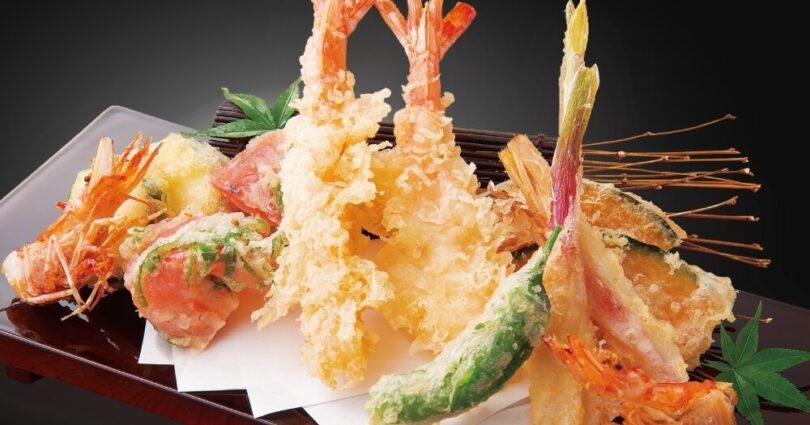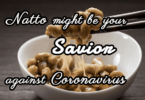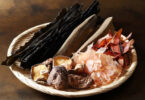Tempura is now loved by many people, not only Japanese but also non-natives around the world.
If you have a little more knowledge about it, you would be more enjoyable when tasting it.
Hello how are you? I’d like to talk about one of the representative ”Cool Japan” Japanese food, “ Tempura” today.
Contents
Where’s Tempura or the name of Tempura coming from ?
Tempura, sounds like no-Japanese food. What I guessed is right, it’s originally from Portuguese.
It is a Japanese dish usually consisting of seafood or vegetables that have been battered and deep fried.
The dish was influenced by fritter-cooking techniques introduced by Portuguese residing in Nagasaki in the 16th century.
During the Edo period, this fried food from overseas was adapted, Japanized, and became extremely popular among ordinary people.
The name originates from the Latin phrase quatuor anni tempora, which refers to the Ember Days, during which no meat is consumed.

I’ve enjoyed it so far without knowing whose term has something to do with Christian word.
Anyway, you can enjoy things that are in season, at the height of their flavour.
It can be found in many types of restaurants across the country, where it is commonly served as a main dish, side dish or as a topping for tendon rice bowls, or udon and soba noodle dishes.
The followings are some of the most popular varieties of tempura pieces:
★Ebi (shrimp/prawn) Ebi are a popular tempura ingredient that can be found on virtually all dishes.

★Sakana (fish) Small fillets or whole small fish are made into tempura pieces. Whitefish such as Japanese whiting, whitebait, goby, sweetfish are typically used.

★Nasu (eggplant)
Nasu are Japanese eggplants or aubergines. Depending on the size of the nasu, they may either be sliced into rounds, cut in half, or cut into a fan shape before being battered and deep fried.

★Kinoko (mushrooms)
Mushrooms are popular ingredients for tempura. All different types of mushrooms are used, especially shiitake and maitake.

★Kabocha (pumpkin)
Kabocha are Japanese pumpkin with a thin, typically dark green skin and orange flesh. The skin is left on when cooking and is eaten together with the flesh. Thin, sweet and starchy wedges of kabocha tempura are common items on tempura menus.

★Satsumaimo (sweet potato)
Satsumaimo are a type of Japanese sweet potato with a purple skin and yellow flesh. When used for tempura, it is sliced thinly and the skin is left on. Like kabocha, satsumaimo are sweet and starchy.

★Shiso (perilla)
Shiso leaves have a mint-like flavor. They are usually served as a garnish with sashimi and are also a fairly common tempura ingredient.

★Kakiage
Kakiage is a type of tempura patty made out of a variety of julienned vegetables and seafood mixed together in tempura batter and deep fried. Kakiage may be served as an appetizer or side dish, or as a topping over rice or noodles.

Where to eat it?
The best place to try it are restaurants specialized in the dish, known as tempura-ya.
They have the reputation of being high-class restaurants, where customers often sit at the counter and watch as the chef prepares one its piece after the other.
A meal at upmarket establishments typically costs 5000 yen or more. However, cheaper ones are also popular, with set meals and tendon rice bowls typically available for 800 to 3000 yen.
Casual restaurants such as izakaya, family restaurants, shokudo(eatery), and udon and soba restaurants also serve it as part of a set meal or as a side dish.
Prices vary but typically range from 600 to 2000 yen. Tendon (tempura rice bowls) are also common with prices starting from around 800 yen.
Supermarkets and department store basement food floors (depachika) also sell individual pieces of tempura for about 100 to 400 yen per piece.

How to enjoy eating it?
At upmarket tempura-ya, the chef will typically serve it starting with lighter flavored items like shrimp and fish, before moving towards stronger flavored items like root vegetables.
Fish and shrimp tempura can be eaten in their entirety, however many people leave the heads and tails if present.
Tempura pieces are usually individually seasoned with salt or dipped into a dipping sauce before eaten.
Usually only one of the two types of seasonings is available, depending on the establishment.
Salt is sometimes matcha or wasabi flavored, while dipping sauces are often accompanied by a small bowl of grated daikon (giant white radish) to be added into the sauce.

Tendon rice bowls are served with a sweet and savory sauce already drizzled over the tempura and usually come with pickles and miso soup.
There is no need to further season the tempura pieces. It served as toppings in noodle soups, too, do not usually come with any additional seasonings.

Tendon (Tempura + rice bowl)
I say again that all of you can enjoy for sure, there are two main ways to enjoy tempura.
One is to dip it in tentsuyu-a dipping sauce made by adding soysauce and some other ingredients to a stock based on dried bonito flakes and kelp.
The other is to use salt. You do this when you wnat to focus more on the natural taste of each ingredient.
How to cook them?
Making authentic tempura requires superior cooking skills. The first stage is the preparation of the ingredients.
Let’s look at how to prepare Japanese witing. First, the fish are carefully scaled with a knife and the heads removed.
Then they’re sliced open along the spine, and the bones and guts are removed. The important thing is to make sure that the fish don’t split into two parts.
Finally, the tails are cut to the same length so that they’ll look nice when they’re served.
This kind of meticulous preparation makes each ingredient taste and look its best.
The next stage is to make the batter, which keeps the savoury tastes locked in. A mixture of beaten eggs and water is poured into a bowl of flour.
It’s important that the ingredients are only lightly mixed. If they’re mixed too much, the batter will get sticky and won’t taste good when it’s fried.

The final stage is to fry the ingredients in oil. Once an item has been coated in batter, it should be fried immediately. And it shouldn’t be left in the oil any longer than necessary-not even one second.

To make delicious tempura, everything must be done carefully and precisely at each step of the process.
Nowadays, new and unusual kind of it are being created to meet contemporary needs. This is tempura ice cream. Hot batter and ice cream are a match made in heaven!
Why is it said that it is a superior type of first food?
That’s because it started out as a dish served at Yadai (street stalls) in Edo period (1603– 1868), but can you guess how did it come to be served at specialized restaurants as an haute cuiseine?

Well, at specialized restaurants these days, the chefs use only high-quality oil and select ingredients.
And what’s more, they prepare the dish with superb skills in front of their customers, so that the customers can enjoy piping-hot freshly cooked tempura.
This is the reason that it’s a superior type of fast food. On the other hand, however, tempura is also a popular item for home cooking, although, of course, it’s difficult to cook it as well as the professionals do.
Various ingredients are coated in batter with tremendous care to deliver unique culinary experienes. That’s the essence of tempura.
Let’s have a taste of delicacies at Tempura restaurant or at home, shall we ?








Leave a Comment